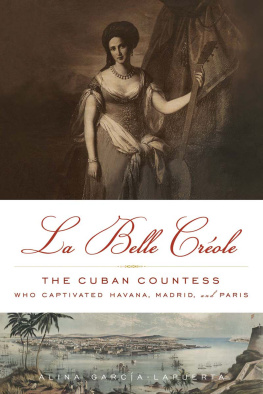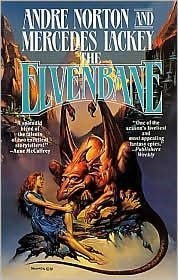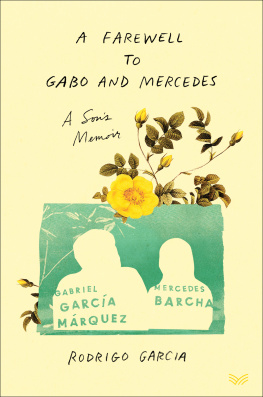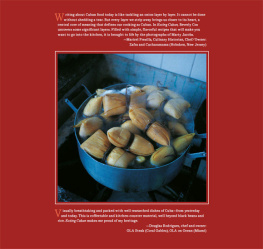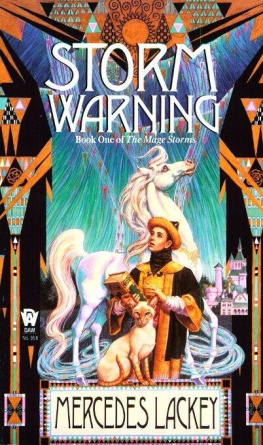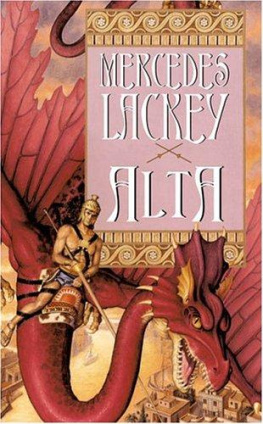K nown for her beauty and angelic voice, Mercedes Santa Cruz y Montalvo, la Belle Crole, was a Cuban-born star of nineteenth-century Parisian society. She befriended aristocrats and artists alike, including Balzac, Baron de Rothschild, Rossini, and the opera diva La Malibran.
A daughter of the creole aristocracy, Mercedes led a tumultuous life, leaving her native Havana as a teenager to join her mother in the heart of Madrids elite society. As Napoleon swept Spain into the Peninsular War, Mercedes family remained at the center of the storm, and her marriage to French general Christophe-Antoine Merlin tied her fortunes to France. Arriving in Paris in the aftermath of the French defeat, she re-created her life, ultimately hosting the citys premier musical salon. Acknowledged as one of the greatest amateur sopranos of her day, she nurtured artistic careers and daringly paved the way for well-born singers to publicly perform in lavish philanthropic concerts. Beyond her musical renown, Mercedes achieved fame as a writer. Her memoirs and travel writings introduced European audiences to nineteenth-century Cuban society and contributed to the debate over slavery. Scholars still quote her descriptions of Havana life and recognize her as Cubas earliest female author.
Mercedes epitomized an unusually modern life, straddling cultures and celebrated on both sides of the Atlantic. Her memoirs, travel writings, and very personal correspondence serve as the basis for this first-ever English-language account of the passionate and adventuresome Belle Crole.

2014 by Alina Garca-Lapuerta
All rights reserved
First edition
Published by Chicago Review Press, Incorporated
814 North Franklin Street
Chicago, Illinois 60610
ISBN 978-1-61374-536-6
Library of Congress Cataloging-in-Publication Data
Garca-Lapuerta, Alina.
La Belle Crole : the Cuban countess who captivated Havana, Madrid, and Paris / Alina Garca-Lapuerta.First edition.
pages cm
Summary: The adventurous woman nicknamed La Belle Crole is brought to life in this book through the full use of her memoirs, contemporary accounts, and her intimate letters. The fascinating Mara de las Mercedes Santa Cruz y Montalvo, also known as Mercedes, and later the Comtesse Merlin, was a Cuban-born aristocrat who was years ahead of her time as a writer, a socialite, a salon host, and a participant in the Cuban slavery debate. Raised in Cuba and shipped off to live with her socialite mother in Spain at the age of 13, Mercedes triumphed over the political chaos that blanketed Europe in the Napoleonic days, by charming aristocrats from all sides with her exotic beauty and singing voice. She married General Merlin in Napoleons army and discussed painting with Francisco de Goya. In Paris she hosted the citys premier musical salon where Liszt, Rossini, and great divas of the day performed for Rothschilds, Balzac, and royalty. Celebrated as one of the greatest amateur sopranos of her day, Mercedes also achieved fame as a writer. Her memoirs and travel writings introduced European audiences to 19th-century Cuban society and contributed to the debate over slavery. Mercedes has recently been rediscovered as Cubas earliest female author and one who deserves a place in the canon of Latin American literatureProvided by publisher.
Includes bibliographical references and index.
ISBN 978-1-61374-536-6 (hardback)
1. Merlin, Mara de las Mercedes Santa Cruz y Montalvo, comtesse de, 1789-1852. 2. CountessesSpainBiography. 3. CountessesCubaBiography. 4. SpainCourt and courtiersBiography. 5. SocialitesFranceParisBiography. 6. SocialitesSpainMadridBiography. 7. SocialitesCubaBiography. 8. Women authors, CubanBiography. 9. SlaveryPolitical aspectsCubaHistory19th century. 10. CubaHistory18101899Biography. I. Title.
DP202.M5G37 2014
972.912405092dc23
[B]
2014018302
See www.alinagarcialapuerta.com for additional information and references.
Interior design: Monica Baziuk
Map design: Chris Erichsen
Printed in the United States of America
5 4 3 2 1

To my parents: Jos Manuel and Mireya,
and to all the other Cubans who left her shores
but never forgot their beloved Cuba bella.

CONTENTS


Index
AUTHORS NOTE
W riting about a woman who was born in the late eighteenth century, lived in three countries, and published in two languages presented a few challengesand choices. To ease the readers way a little, here are some explanations.
The phrase creole often puzzles the modern reader. Many think that creole or criolla (in Spanish) means a person of mixed race from the former slave-owning states or the Caribbean. However, the word merely indicates that someone was born in a colony, generally of European descent. In Cuban terms, criolla/criollo can be used for anything from food to customs, and distinguishes the colonies from the Spanish peninsula. Mercedes and her family most certainly considered themselves creoles, and when people in Europe called her La Belle Crole, they were referring to her Cuban birthplace.
Names are also problematic. Throughout the book I use the original spelling for Spanish or French namesboth for individuals and places. There are three exceptions: Havana, Napoleon, and Wellington. La Habana is the Spanish name of Cubas capital but since the English version is so well-known I have used it throughout. For similar reasons, it seemed pointless to add an accent to such a famous name as Napoleon. I have also called him Napoleon throughout, although strictly speaking, he was only called that as emperor. Likewise, Wellington is always Wellington, even though Arthur Wellesley did not receive his dukedom until the end of Europes Peninsular War. Also related to titles, I have translated the titles comte, conde, and so on, in an attempt to simplify matters. The one exception is marqus/marquesa or marquis/marquise. I felt that the English equivalent (marquess and marchioness) are less well known and probably as confusing as the originals. I have kept the original names that go with the titles. Where appropriate, I have also kept the honorific don or doa as there is no adequate translation. The honorific was placed before the first name and in Mercedes day was only used for the white population.
Mara de las Mercedes Santa Cruz y Montalvo is a rather long name. But the double last name is not an aristocratic styling; rather, all Spanish-speaking countries follow this usage. Men and women have two last names: paternal first and maternal second. The parents each pass on their first (paternal) last name. Mercedes Santa Cruz y Montalvo is the daughter of Joaqun de Santa Cruz y Crdenas and Teresa Montalvo y OFarrill, therefore her name Santa Cruz comes from her father and Montalvo from her mother. And so it goes.
Another source of confusion is that Cuban and Spanish women never lose their maiden nameeven after marriage. Therefore, all such women in the book continue to be called by their original names. They do accept their husbands titles, however! Again, there is an exception: Madame Merlin. Since Mercedes married a Frenchman and lived in France, in the British and French press, she was sometimes called Madame Merlin.
Finally, despite the profusion of names and titlesMara de las Mercedes, Mara Merced, Mara de la Merced, Mercedita, Condesa de Merlin, Comtesse MerlinI have chosen to call her Mercedes throughout. It seems a touch more personal, and after so many years immersed in her life, I feel as though I know her.
Next page
